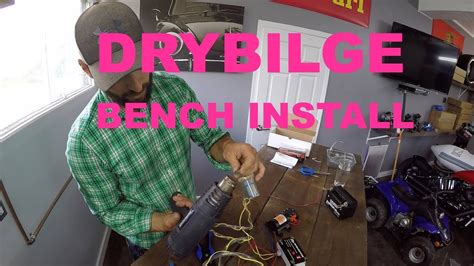How To Keep Bilge Dry
Ronan Farrow
Mar 25, 2025 · 3 min read

Table of Contents
How to Keep Your Bilge Dry: A Sailor's Guide to Preventing Leaks and Water Ingress
Keeping your boat's bilge dry is crucial for preventing costly repairs, ensuring the longevity of your vessel, and, most importantly, maintaining safety at sea. A wet bilge can quickly become a breeding ground for mold, mildew, and corrosion, and it can indicate serious underlying problems. This guide will provide you with practical advice on how to keep your bilge dry and maintain a healthy boat.
Understanding the Sources of Bilge Water
Before tackling solutions, let's identify the common culprits behind bilge water accumulation:
1. Leaks: The Silent Threat
Leaks are the most significant source of bilge water. These can stem from various points:
- Hull Leaks: These can range from small pinhole leaks to more substantial cracks, often caused by impacts or age-related deterioration.
- Through-Hull Fittings: These are vital components, but worn-out or improperly sealed through-hull fittings (for things like seacocks and drains) are a common source of leaks.
- Deck Leaks: Water entering through cracks in the deck, poorly sealed hatches, or improperly installed deck fittings can quickly accumulate in the bilge.
2. Condensation: An Often Overlooked Culprit
Condensation forms when warm, moist air comes into contact with cooler surfaces within the boat's hull. This is particularly prevalent in humid climates or when the boat sits unused for extended periods.
3. Rainwater Infiltration: Nature's Contribution
Rainwater can enter through poorly sealed hatches, deck fittings, or any gaps in the hull's structure. Proper maintenance and sealing are key to preventing this.
4. Water from Washing Decks and Equipment
Washing down the deck and equipment can inevitably lead to some water entering the bilge. Careful rinsing and the use of bilge pumps can minimize this issue.
Proactive Measures for a Dry Bilge
Prevention is always better than cure. Here's how you can proactively combat bilge water:
1. Regular Inspections: The First Line of Defense
Regularly inspect your boat's hull, through-hull fittings, and deck for any signs of leaks, cracks, or damage. Look for stains, damp areas, or water dripping.
2. Proper Sealing and Maintenance: The Cornerstone of Prevention
Ensure all through-hull fittings are properly sealed and maintained. Replace worn-out seals and regularly check for any signs of deterioration. Apply sealant to any cracks or gaps in the deck or hull.
3. Effective Ventilation: Reducing Condensation
Proper ventilation helps to reduce condensation by allowing air circulation and reducing humidity levels within the boat. Open hatches and portholes when possible, and consider installing ventilation fans.
4. Careful Cleaning and Rinsing: Minimizing Water Ingress
When washing down the deck or equipment, be mindful of where the water is going. Direct water away from the bilge areas, and use bilge pumps as needed.
Reactive Measures: Dealing with Bilge Water
If you do find water in your bilge, don't panic. Here's what you should do:
1. Identify the Source: Finding the Leak
Determine the source of the water ingress. This often requires careful inspection and possibly the assistance of a marine professional.
2. Employ Your Bilge Pump: A Quick Response
Use your bilge pump to remove the accumulated water. Ensure your bilge pump is properly maintained and functioning correctly.
3. Repair the Leak: Addressing the Root Cause
Once the source of the leak is identified, repair it promptly. This might involve sealing cracks, replacing seals, or seeking professional assistance for more extensive repairs.
Conclusion: A Dry Bilge is a Happy Bilge
Maintaining a dry bilge is a vital aspect of responsible boat ownership. By combining proactive measures like regular inspections, proper sealing, and effective ventilation with reactive measures such as promptly addressing leaks and utilizing your bilge pump, you can significantly reduce the risk of water accumulation and ensure a safe and enjoyable boating experience. Remember, a dry bilge is a happy bilge – and a happy boat owner!
Featured Posts
Also read the following articles
| Article Title | Date |
|---|---|
| How To Join Hvac Union | Mar 25, 2025 |
| How To Remove Gorilla Glue From Car Paint | Mar 25, 2025 |
| How To Measure Driver Shaft Length With Head | Mar 25, 2025 |
| How To Make A 6 0 Powerstroke Reliable | Mar 25, 2025 |
| How To Remove Concrete Anchors From Wall | Mar 25, 2025 |
Latest Posts
Thank you for visiting our website which covers about How To Keep Bilge Dry . We hope the information provided has been useful to you. Feel free to contact us if you have any questions or need further assistance. See you next time and don't miss to bookmark.
